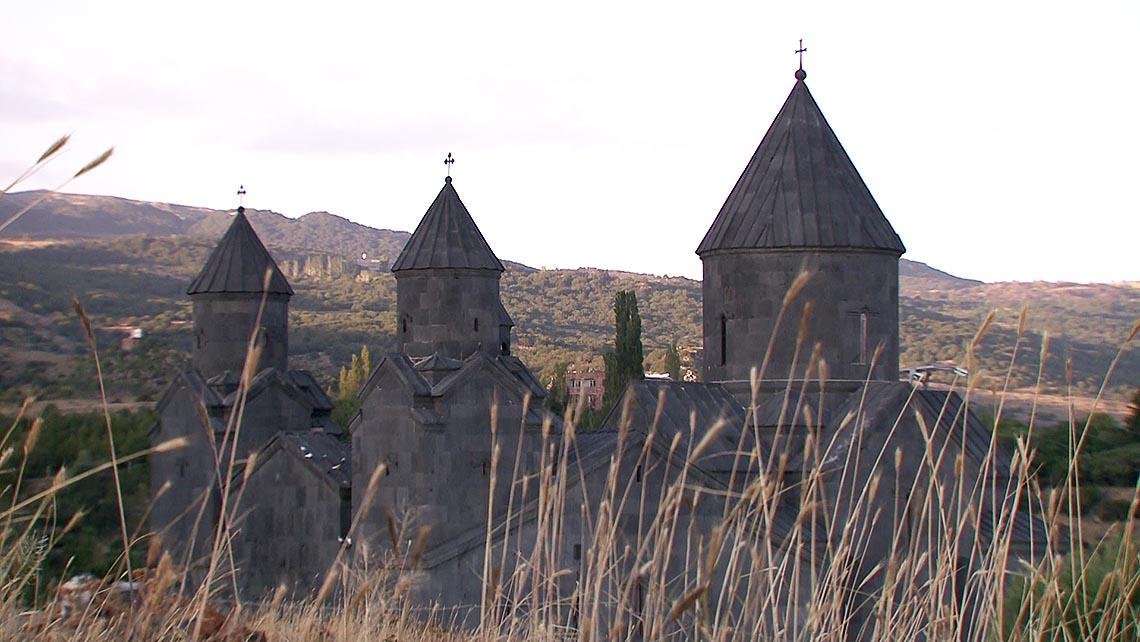
 |
The Koshik desert Monastery Complex in Artsakh
The Koshik Desert Monastery Complex is located in the Martuni region of the Republic of Artsakh.
The monastery was one of the spiritual centers of the Khaghbakyan princes of Artsakh. It was built in the 11th-12th centuries. The name of the monastery, Koshik, probably comes from the word goshk. Goshk is a name for a group of hermits living in the mountains. Since 2023, the monastery, along with the Nagorno-Karabakh Republic, has been occupied by Azerbaijan. It is under the jurisdiction of the Artsakh Diocese of the Armenian Apostolic Church.
|
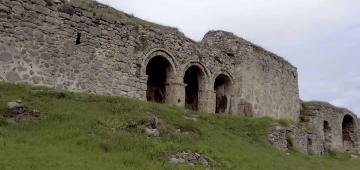 |
St. Hakob Monastery of the Republic of ArtsakhFounded in the early Middle Ages, the St. Hakob Monastery is located in the Martakert region of the Republic of Artsakh. In subsequent centuries, the Armenian princes of Artsakh rebuilt it; by the 13th century, Hakob Monastery was already a large monastic complex. In 2020, a pan-Armenian fundraising campaign was launched for the restoration of the monastery. In 2023, the monastery, together with the Nagorno-Karabakh Republic, was occupied by Azerbaijan. Since then, the St. Hakob Monastery has been under the jurisdiction of the Artsakh Diocese of the Armenian Apostolic Church. |
 |
Holy Mother of God Church in ArstakhThe Holy Mother of God Church, built in 1841, is located in the village of Karmir, Askeran region of the Republic of Artsakh. In 2023, the monastery was annexed by Azerbaijan along with the Republic of Nagorno-Karabakh. The Holy Mother of God Church in the village of Karmir is under the jurisdiction of the Artsakh Diocese of the Armenian Apostolic Church. |
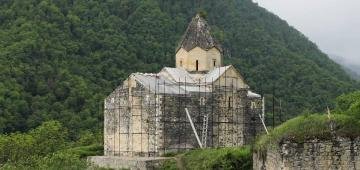 |
Yerits Mankants MonasteryThe Yerits Mankants Monastery in the Martakert region of the Republic of Artsakh was founded in the 17th century. It belonged to the Melik-Israelyans of Jraberd, one of the five meliks of historical Artsakh. In 2023, the monastery was occupied by Azerbaijan along with the Nagorno-Karabakh Republic. The Saint Yerits Mankants Monastery is under the jurisdiction of the Artsakh Diocese of the Armenian Apostolic Church. |
 |
Aghavno Holy Martyrs Church in ArtsakhThe Church of the Holy Martyrs, located in the village of Aghavno, Kashatagh region of the Nagorno-Karabakh Republic, near the Armenia-Artsakh border checkpoint, was built in 2002. The author is the prominent architect Baghdasar Arzumanyan. Together with the village of Aghavno, the church came under the control of the Azerbaijani armed forces in 2022. The Church of the Holy Martyrs is under the jurisdiction of the Artsakh Diocese of the Armenian Apostolic Church. |
 |
Verin Tsaghkavan: Shkhmurad MonasteryThe visiting card and pride of the village of Verin Tsaghkavan in Tavush region is the 12th-13th century Shkhmurad Monastery. It is located 6-7 km southwest of the village. The once powerful monastery complex is now in ruins. If the Shkhmurad Monastery complex is restored and the road leading to the sanctuary is improved, a new stage in the life of the village will begin. |
 |
LusagyughThe village of Lusagyugh in the Aragatsotn region is rich in ancient sanctuaries and pilgrimage sites: Mkhe Monastery, Veri Vank or Saint Gregory Monastery, and the Church of the Holy Virgin Mary. The sanctuaries inherited from our ancestors still have thousands of pilgrims today. |
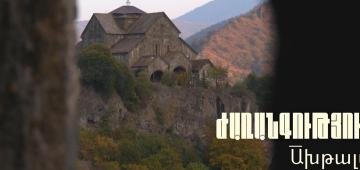 |
Akhtala
The estate-farm and monastery of the princes of the Gugark world have been known to historians since the 5th century. In later centuries, when copper mines were discovered here, Agarak was renamed Pghndzahank, and the monastery was renamed Pghndzahank Monastery. The settlement and church named Akhtala have been mentioned in historical sources since the 14th century.
|
 |
The Holy Mother of God monastery in Akhtala"Me, Mariam, daughter of Kyurike, have erected a bronze altar to the Holy Mother of God. You who worship, remember my prayer to us.” The khachkar with this inscription, created by order of Princess Mariam, is in the courtyard of Akhtala; it is the de facto passport of the monastery. The khachkar, made in 1188, is tangible evidence of attempts by foreigners, especially Georgians, to appropriate the monastery at different times and of the settlement of disputes. The Akhtala monastery is the largest monastery in the region named after the Mother of God. It is also one of the richest monasteries in frescoes: 960 square meters of unique medieval frescoes have come down to us, which have never been restored in 800 years. |
 |
The Holy Savior church of Gyumri
The Church of the Holy Savior, considered one of the symbols of Gyumri, celebrates the 150th anniversary of its construction this year. It is said that the people of Gyumri dreamed of having a church similar to the Mother Cathedral of Ai and began collecting donations for its construction in the 1850s. The church, built in 1873 with great difficulties and expectations, ceased to function in the 1930s under the coercion of the Soviet authorities, and in 1937 the Bolsheviks blew up the bell tower. The final blow to the Church of the Holy Savior was the devastating earthquake of 1988, when the church collapsed. After many years of restoration, the restoration of the Church of the Holy Savior was completed in 2024 and was reconsecrated under the auspices of the Armenian Patriarch.
|
 |
In the footsteps of Grots and Brots
2024 marks the 150th anniversary of the publication of Garegin Srvandztyants’ book “Grots and Brots and David of Sasun or Mher's Door”. This significant book for Armenian philology and ethnography, among other important materials, published the first version of the epic “Sasna Tsrer”. The video film presents this book, accompanied by exclusive footage from filming in Sasun in 2024, which presents the places, monuments and churches, Armenian-populated villages and people remembered in the national epic.
|
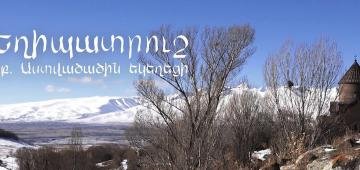 |
Holy Mother of God Church in YeghipatrushBuilt in the 13th century by the order of Vache Vachutyan, the Church of the Holy Mother of God has kept awake not only the spiritual life of Yeghipatrush, but also the surrounding villages. Locals say that the church bell rang so powerfully that it was heard several villages away. Locals tell about the church of the village, the unique khachkars painted in scarlet. |
